The 4th trimester
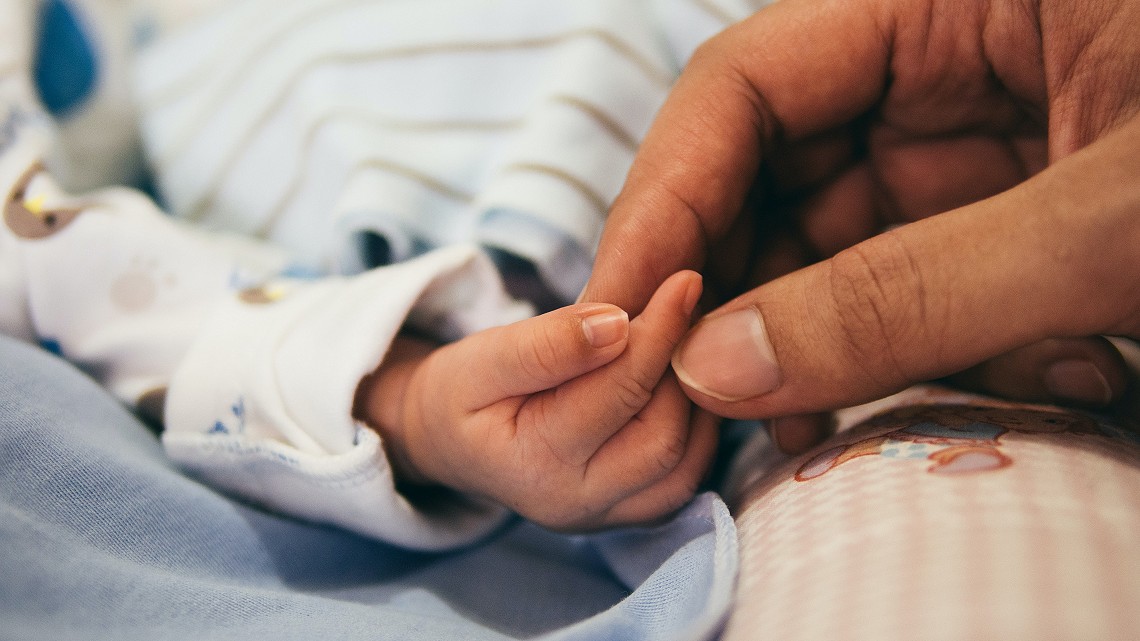
What do we consider the 4th trimester?
It is the post partum period from birth to 3 months minimum. It is called the 4th trimester as the birth is not considered a separation of mother and child but a continuum between the two. It is a transition and adaptation of life from intrauterine to the external world. It could be considered as an extra-uterine term.
This trimester is a time of development in many aspects: physical, psychological and social. It promotes the attachment of the child to the mother and partner. These events are dependant on the hormonal changes occurring in each parties.
Our role as osteopaths is to be aware of those physiological changes to best support mum and baby during the 4th trimester and help improve those mechanisms.
In this article, for biological example, I will be going through the mechanisms of pregnancy, child birth and breast feeding but there is now research available to show that most of these mechanisms can occur for parents who have adopted or used surrogacy. Some triggers for hormonal stimulation may differ but the results can be the same!
Thanks to the available research on epigenetics, we now know that the care giver’s behaviour will induce the baby’s response which will in turn reinforce the attachment/ bond between the two. This can be done by stimulation of our senses but mostly it has been seen with high tactile stimulation: persistent touch stimulation can trigger transcription factors and modification of DNA. In other words, the parent’s involvement and presence can change the baby’s DNA to develop neural pathways and learn or reinforce behaviours.
The role of the hormones in the 4th trimester
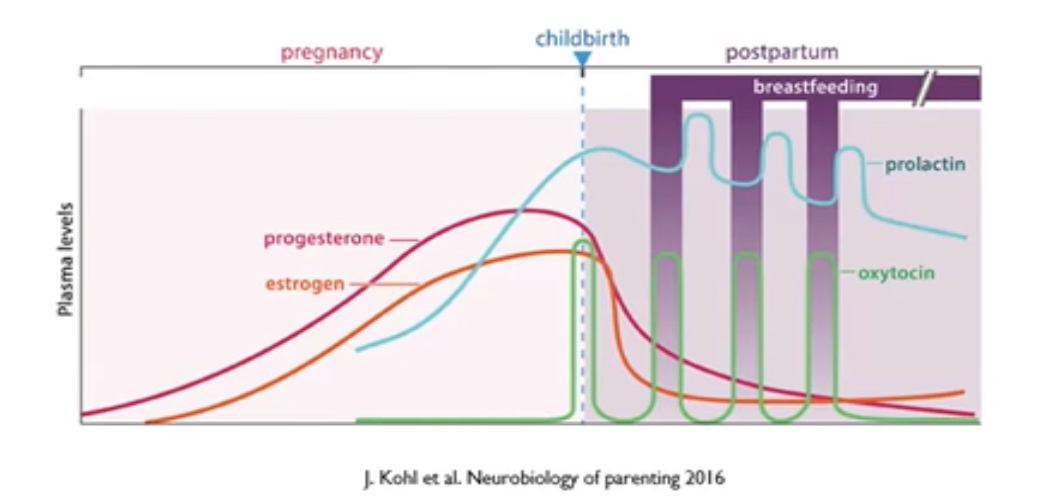
Oxytocin
Is stimulated by nipples and feeding, smell, baby’s vocals, visual , skin to skin, touch and pressure and heat. Oxytocin promotes behaviours such as trust, eye contact, bonding, baby’s survival responses and anxiety relief on both mum (parent) and baby! relief
The physiological responses to oxytocin are: Milk production, pain relief (rise in threshold) and stress relief.
The power of touch in the release of oxytocin is incredible. It Inhibits cortisol, promotes baby’s growth and fires the Parasympathetic system creating vasodilation of the periphery (keeps your head, hands and toes warm) and the viscera (wakes up the digestive system), stimulating the vagus nerve and reducing blood pressure. Its also Increases the healing mechanism and Improves the cognitive processes such as memory and learning.
Cortisol
Cortisol has always had a bad reputation but actually it is necessary in small doses for some processes to occur in the body.
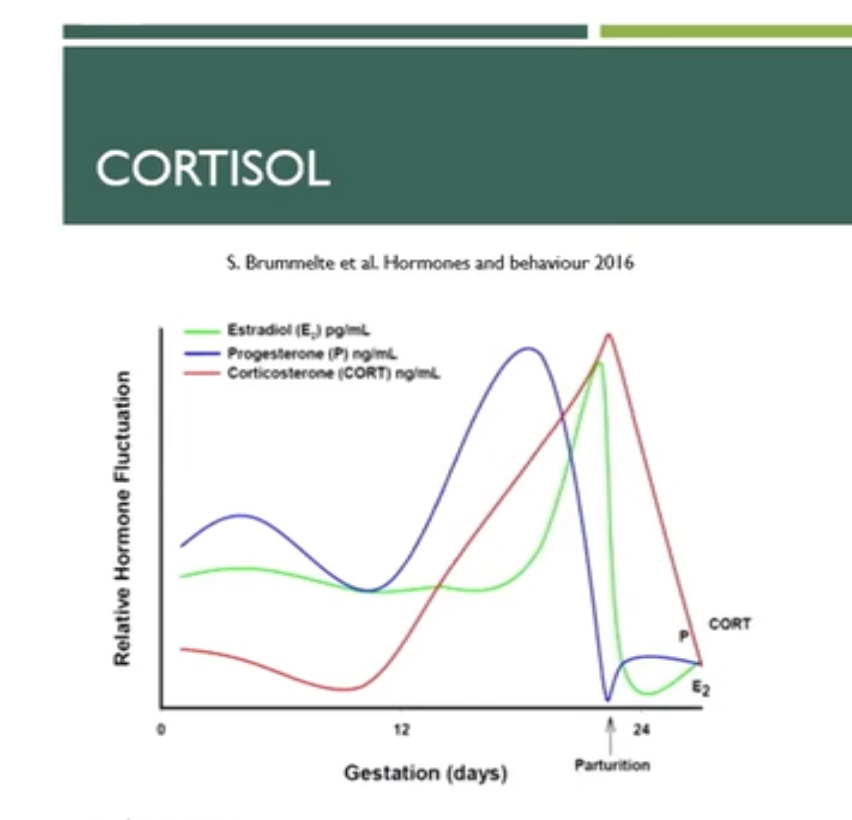
In the mother, cortisol will increase blood sugar levels, trigger lipogenesis and the sympathetic nervous system activity (your fight and flight response), increase the blood pressure, lead to stomach ulcers, vasoconstriction and act as an immunosurpressor.
The effects of cortisol on baby are: in utero pulmunary maturation, epigenetic modulation to stress, Adaptation to birth: increase heart rate, awareness, difestive function, maturation of thyroid, regulation of adrenaline and metabolism.
Cortisol is a hormone that needs fluctuation to better regulate the body. In an adult, there is a peek of cortisol around 8 am and in the afternoon. This helps us wake up and get ready for the day and get a little boost in the afternoon to continue our tasks.
In babies, the peak is in evenings, late afternoons around 5-6pm. Due to this it is normal for baby to be unsettled around that time. At the same time, the mothers milk becomes thicker and richer in fat to help baby sleep for the night and therefore it is the prime time to feed baby. The feeding and sucking will allow the baby to reduce its peak of cortisol and you may notice the need to cluster feed. This is often the witching hour parents refer to when baby is impossible to settle but the key is to no try to settle them but to feed their cortisol peak!
Before 3 months, babies have a heightened reaction to pain due to the cortisol. Triggers like injections, getting out of bath, changing of nappy are particularly stressful for babies so allowing parent to hold baby (skin to skin) or feed in such moments can act as analgesic.
Melatonin
Melatonin is your sleep hormone. It is inhibited by light of the day and secreted at night with a peak around 2-4 am and gradually starts rising from around 8-9pm. During the 3rd trimester there is an increased secretion and higher levels of melatonin which is why it is important to go with follow your sleepyness. Having good sleep cycles and avoiding blue lights to maintain those levels and get you ready for birth.
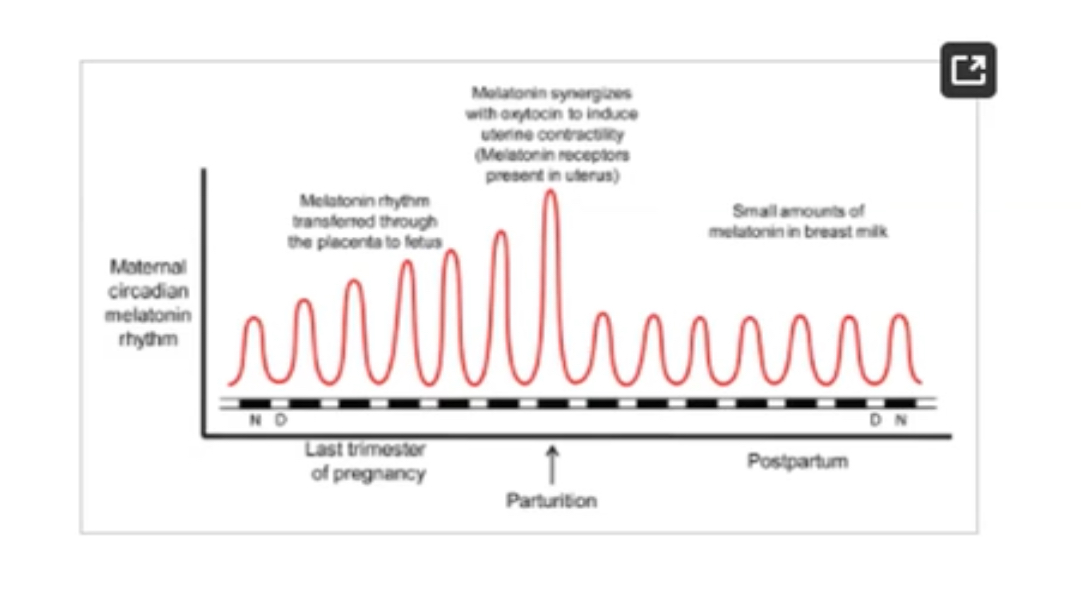
It has been found that Melatonin wakes up the uterine cells receptors to welcome the oxytocin, therefore it has an important role in the trigger of labour!
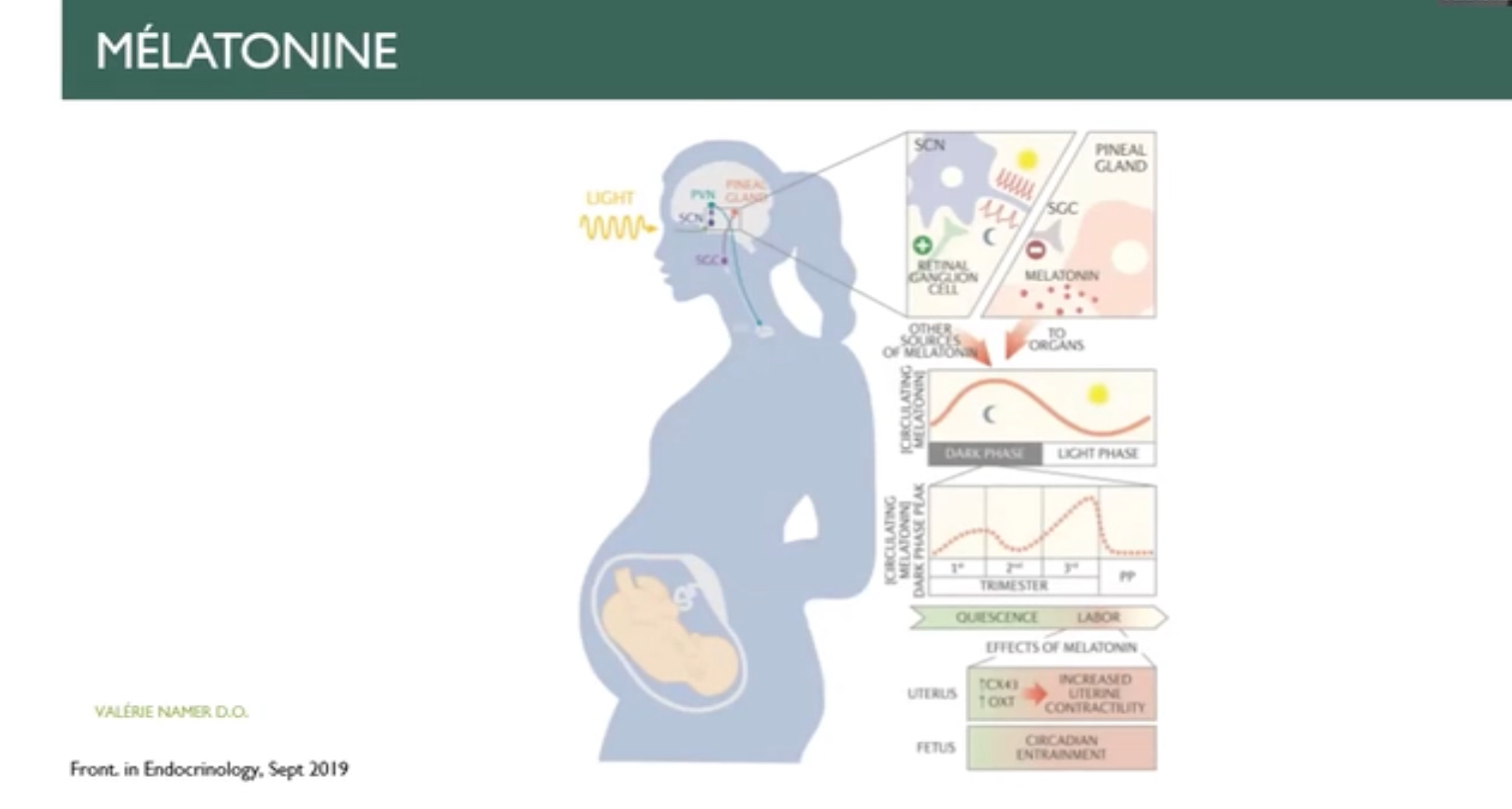
The New born does not secrete melatonin so is dependant on the mother through breast milk to develop a sleep cycle and this will reduce cortisol levels.
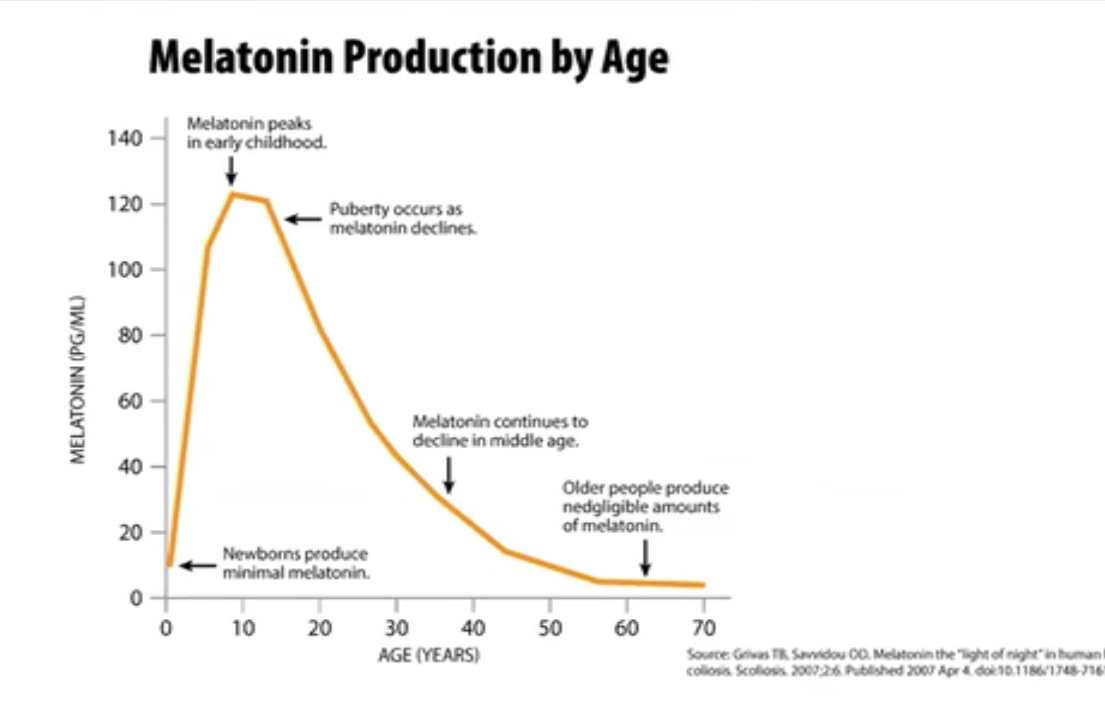
This leads me to talk about milk expressing. As we have seen there are fluctuations of cortisol and melatonin throughout the day: Expressed morning milk will have more cortisol. Expressed evening milk will have more melatonin. So labelling what part of day the batch is from will help promote sleep cycles: i.e: a night feed should be from milk that has been expressed in the evening/night and vice versa.
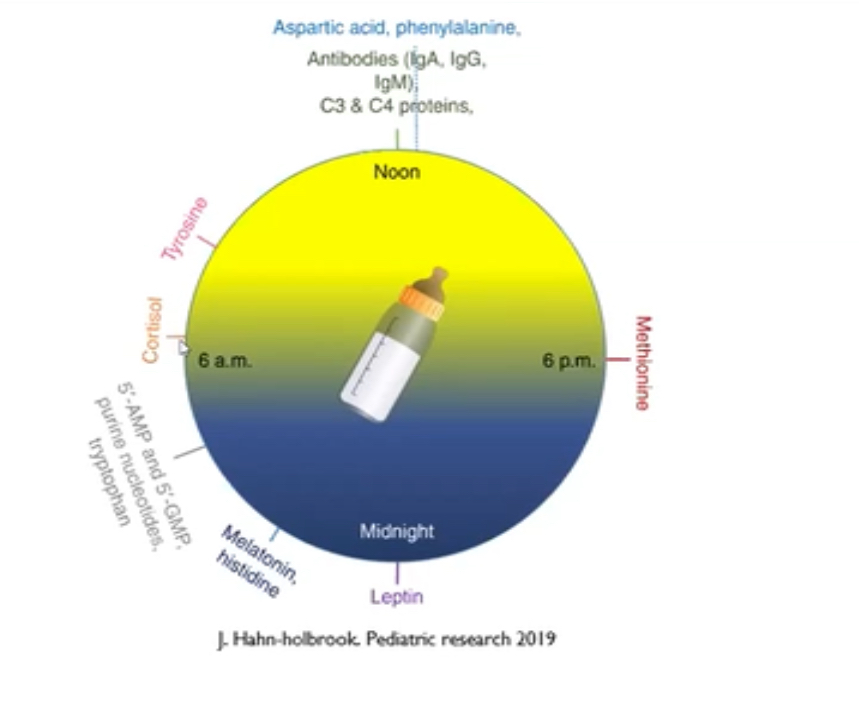
Prolactin
Prolactin is active after the placenta expulsion. It only arrives arrives around day 2-5 after delivery. In the mean time, before your prolactin arrives, Colostrum is rich in fatty acidcs and amino acids which is perfect for your newborn. Prolactin is secreted after 10-30 min of breast feeding or expressing. Double nipple stimulation can be helpful to promote prolactin secretion. So double breast pumps are beneficial and it maybe why sometimes your baby is tempted to go and grab your other breast whilst you feed.
Prolactin can Inhibit/stop periods if there is regular feeding or expressing of a duration of at least 10-30min. It helps mothers fall to a deeper sleep to synchronise with baby (sleep is 3-4x more deep than adult).
What is Co-regulation?
Co-regulation is a dynamic process between mother/father/partner/ care giver and baby. It is the key part of the 4th trimester. It is the development of the child’s behaviour in reaction to the father/ partner or mother’s behaviour.
With a heterosexual couple: The mother’s oxytocin secretion increases the prolactin which increases her testosterone levels. Whereas the father’s oxytocin secretion reduces testosterone. The aim of this is for the father to get more involved in caring for the new baby initially and also it promotes the mother to be more maternal and the father to stimulate, play and develop the cognitive field of the baby. Each mechanism is dependant on how much time is spent with the baby as it is the interaction triggers the oxytocin release.
The role of osteopathy:
Osteopathy can be really helpful to the new parents and baby. As osteopaths, we will look at the general wellbeing as well as focus on specific difficulties brought forward. We are here to support your post natal period, assist and answer any questions you may have. We are here to listen, bring awareness on what to expect and give you tools to use at home. We can unlock tensions that the baby may have acquired intra utero or at birth, allow better function of sucking-feeding, check mobility, development and advise on positions and exercises according to baby’s needs. As for the care givers, we can relieve aches and pains caused by new postures due to new demands and activities and support breastfeeding with practical advice. If needed, we are also here to refer you or baby on to the right specialist to make sure you get the best care.

